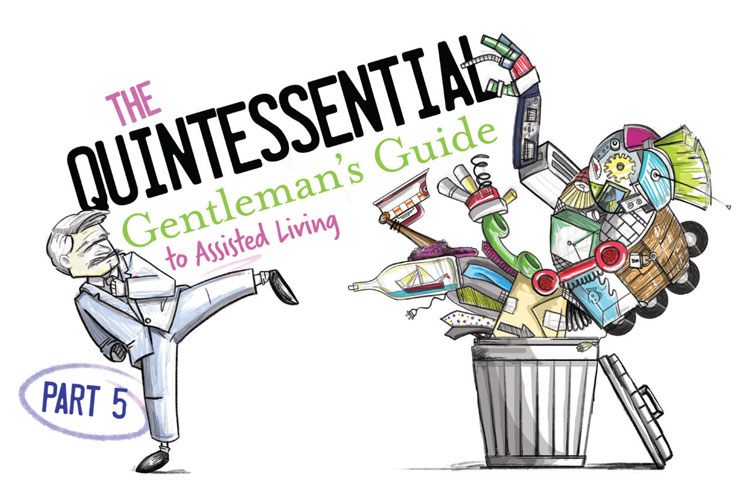How to Pay for Assisted Living
Studies show that more than two-thirds of Americans over the age of 65 will need long-term care at some point in their life. Given this fact, it’s more important than ever to make a plan for how you will pay for assisted living.
Whether you’re needing assisted living now, planning for the near term, or thinking about the future, there are a variety of financing options to consider. Each one comes with its own set of benefits and drawbacks.
Personal Investments, Savings and Retirement Plans
The logic is fairly simple—the earlier in life you start saving, the more money you will have for retirement. Saving may be easier said than done, as you may have a mortgage, bills to pay, children to care for and more. However, even saving a little bit of money at a time can go a long way.
Retirement plans like 401(k)s and IRAs generally allow you to put your money into an “index fund,” which spreads your investments across the stock market and returns around 10% per year. People often designate a certain amount of money from each paycheck to be contributed to their retirement account. This is a guaranteed way to build your retirement savings over the course of your lifetime.

Deferred-income Annuity
Deferred-income annuities allow you to put down a certain amount of money now in exchange for a guaranteed income in the future. As an example, a 60 year old may be able to put down $50,000 today in exchange for receiving payments of $20,000/year for life starting at age 85. By their third year of payments, they’ve already received a return on investment, and they get to continue receiving the income every year.
There are a variety of annuity options out there. Terms vary based on how much money is put down initially, the date that payments are set to begin, and the length of time in which the annuity is expected to pay out. People often buy annuities in their 50s or 60s and then wait to receive payouts until their 70s or 80s. In general, the longer you wait for payouts to start, the higher the payments will be. You can opt to receive annuity income for a set number of years or for your entire lifetime.
Use this tool to find out how much guaranteed income you could receive from a deferred-income annuity.
Social Security
Social security is a guaranteed monthly benefit that you can start receiving at age 62. However, you will receive larger payments if you wait until “full retirement age,” which is age 66 or 67 depending on your date of birth. The amount of money you receive from social security is based on the taxes you paid on income throughout your lifetime.
Social security is an earned benefit that seniors across the country rely on. While social security alone will likely not cover the cost of assisted living, it can be very helpful when used in combination with other sources of income.
Long-Term Care Insurance
Long-term care insurance is an insurance product that allows you to pay a monthly premium in exchange for benefits toward long-term care if you need them in the future. Buying this insurance can be a great way to plan ahead, since it may lower the need to liquidate assets when paying for assisted living.
Premiums and eligibility for long-term care insurance vary by age, health status, policy features and more. Due to the high cost of long-term care insurance, it’s important to be fully aware of both the benefits and drawbacks. Read this detailed guide to long-term care insurance to learn more.
Life Insurance
Many life insurance plans have an option that allows you to convert your life insurance benefits into payments for long-term care while you’re still alive. Depending on your plan, this may be done in a variety of ways. Some plans include a feature called “accelerated death benefits,” which allow you to receive a tax-free advance on your life insurance benefits while you are still alive. Other plans allow for a “life settlement,” which allows you to sell your entire life insurance policy for its present cash value. Finally, there is a product called hybrid long-term care insurance, which provides a set amount of benefits already designated to long-term care that can be converted back to life insurance if the long-term care benefits don’t get used.

Selling Your Home
If you are moving out of your home and into an assisted living community, it may be a good idea to put your home on the market. Selling your home will allow you to receive a large lump sum of cash to help pay for assisted living, especially if you’ve paid off your mortgage, or at least a substantial portion of your mortgage. It may be hard saying goodbye to the place you’ve lived for years, but the liquidity that selling your home provides can go a long way toward a financially-secure retirement.
Renting Out Your Home
If you’re not ready to put your home on the market, renting out your home is a great way to receive a consistent source of monthly income. The benefit to doing this is that you can keep your home as an asset but also receive income from rent to pay for assisted living. This can be done on a long-term basis, or you could simply rent out your home until the market brings about a good offer to sell.
If you have a spouse still living at home, another option to consider is renting out a single room. If you decide to go this route, it’s important to find the right person to live there with whom your spouse will get along. You may consider renting out a room to another family member or close friend.
Disability Benefits
The Social Security Disability Insurance (SSDI) and Supplemental Security Income (SSI) programs provide monthly payments to individuals with certain disabilities or medical conditions. For older adults who need assisted living, this income can be a helpful way to cover some of the cost.
For more information on how to receive disability benefits, check the Social Security Administration’s list of qualifying disabilities and instructions on applying for SSDI or SSI.
Medicaid
For those who are eligible, Medicaid can be used to cover the cost of care at skilled nursing facilities. Depending on the state, it may be used to pay for assisted living or in-home care as well. Check your state’s Medicaid eligibility guidelines to find out what is covered. It’s important to note that health care providers vary in their ability to accept Medicaid. When researching long-term care providers, make sure to ask if they accept Medicaid as payment.
VA Benefits
The Department of Veteran’s Affairs offers military veterans up to $1,794/month in benefits to cover long-term care costs. It also offers spouses $1,153/month and couples a combined $2,217/month. These benefits may only be used toward the cost of care and not for rent. The VA offers their own assisted living communities, but the benefits may also be used at other eligible communities. To learn more about paying for assisted living through the VA, click here.
Bridge Loan
Short-term loans such as bridge loans can be effective tools to finance assisted living for a short period of time, until longer term financial options can be worked out. Loans should be taken out with caution, as any money borrowed must eventually be paid back with interest. Loans should only be used if you know you will have the money to pay them back, such as by selling your home.



